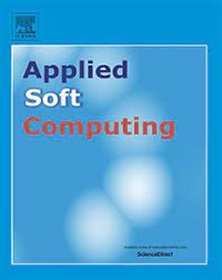Exploring coordinated motion patterns of facial landmarks for deepfake video detection
IF 7.2
1区 计算机科学
Q1 COMPUTER SCIENCE, ARTIFICIAL INTELLIGENCE
引用次数: 0
Abstract
Due to the rich geometric and motion information they contain, recent studies indicate that facial landmark clues have significant potential for deepfake video detection. In this paper, we make a key observation that there exist coordinated motions among different facial landmarks for real individuals. While the forgery methods focus more on appearance realism, thus likely to disrupt the underlying coordinated motion patterns. Inspired by this observation, this paper explores how to leverage coordinated motion patterns among facial landmarks to enhance deepfake detection. First, we introduce a coordinated motion landmarks mining strategy (CMLMS), to effectively identify correlated landmarks. Utilizing these correlations, we propose a landmark temporal dynamic relation module (LTDRM), which focuses on the coordinated motion patterns between landmarks while extracting their spatiotemporal features. Specifically, LTDRM constructs an adjacency matrix based on the correlated landmarks and uses graph convolution to selectively aggregate information between correlated landmarks. Additionally, LTDRM is a plug-and-play module and can boost the performance of existing deepfake detection methods with minimal computational overhead. Experimental results validate the effectiveness and generalizability of our method.

求助全文
约1分钟内获得全文
求助全文
来源期刊

Applied Soft Computing
工程技术-计算机:跨学科应用
CiteScore
15.80
自引率
6.90%
发文量
874
审稿时长
10.9 months
期刊介绍:
Applied Soft Computing is an international journal promoting an integrated view of soft computing to solve real life problems.The focus is to publish the highest quality research in application and convergence of the areas of Fuzzy Logic, Neural Networks, Evolutionary Computing, Rough Sets and other similar techniques to address real world complexities.
Applied Soft Computing is a rolling publication: articles are published as soon as the editor-in-chief has accepted them. Therefore, the web site will continuously be updated with new articles and the publication time will be short.
 求助内容:
求助内容: 应助结果提醒方式:
应助结果提醒方式:


